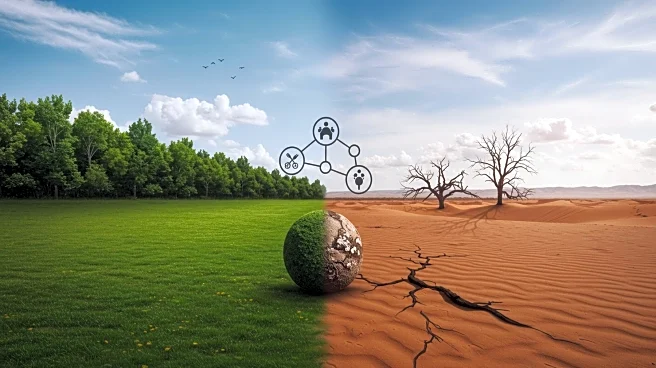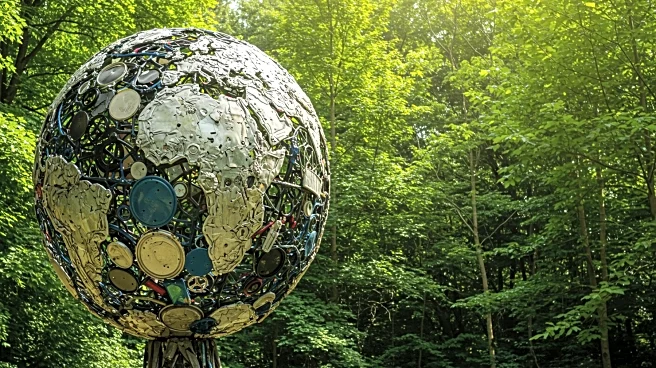What is the story about?
What's Happening?
The accelerating rise in carbon dioxide (CO2) emissions caused by human activity is pushing the planet toward a potential mass extinction, according to insights from MIT mathematician Daniel Rothman. Historical events, such as the Siberian Traps eruptions 252 million years ago, have shown that rapid CO2 increases can trigger mass extinctions. Rothman warns that the current pace of CO2 emissions, driven by human activities since the Industrial Revolution, is replicating these historical events at an unprecedented rate. This could lead to devastating consequences for ecosystems worldwide, potentially causing a sixth mass extinction.
Why It's Important?
The implications of unchecked CO2 emissions are dire, as they threaten to disrupt Earth's natural carbon cycle, leading to global warming, ocean acidification, and ecosystem collapse. The current rate of emissions is about ten times faster than past volcanic events, posing a significant risk to biodiversity and the stability of life-supporting systems. If human activities continue at this pace, the planet could enter a feedback loop of irreversible climate change, with catastrophic consequences for life on Earth.
What's Next?
To prevent a sixth mass extinction, humanity must drastically reduce CO2 emissions and shift towards sustainable practices. This includes transitioning to renewable energy sources, reducing deforestation, and implementing large-scale carbon capture initiatives. The urgency of the situation requires immediate collective action to reverse the trajectory toward mass extinction.
Beyond the Headlines
The current crisis is unfolding on a timescale of mere centuries, unlike previous mass extinctions that occurred over geologic timescales. The modern industrial system's ability to extract and burn fossil fuels has put the planet at risk of triggering a planetary failure that historically took tens of millions of years to unfold.
AI Generated Content
Do you find this article useful?











